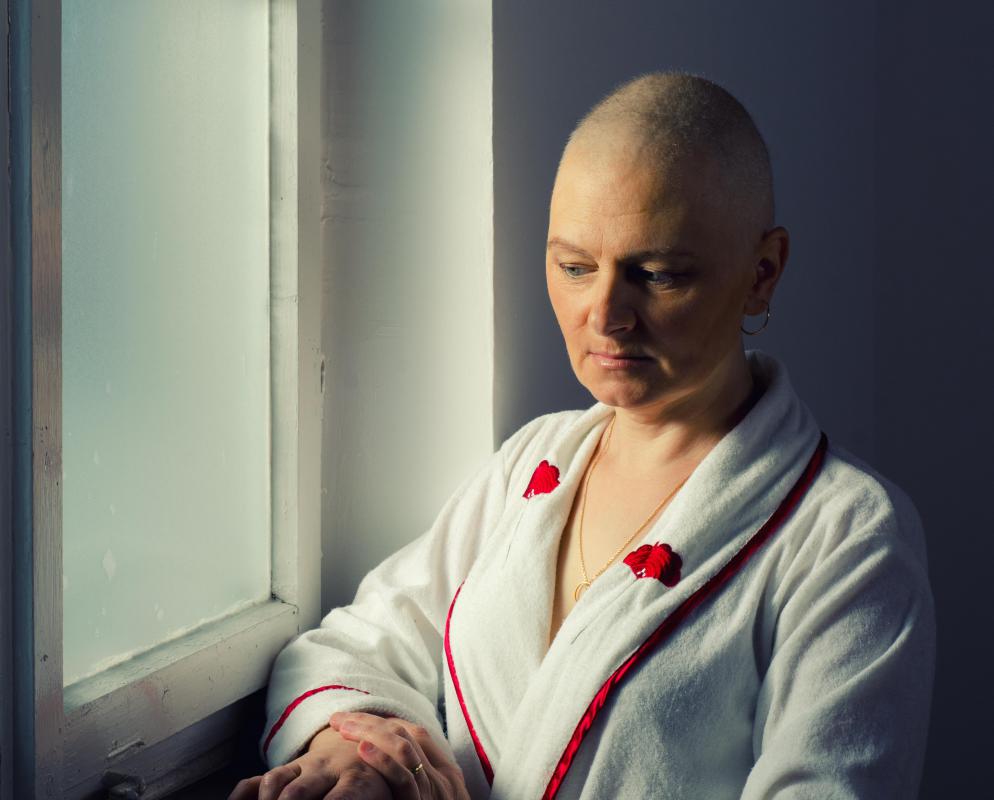At WiseGEEK, we're committed to delivering accurate, trustworthy information. Our expert-authored content is rigorously fact-checked and sourced from credible authorities. Discover how we uphold the highest standards in providing you with reliable knowledge.
What Is R-ICE Chemotherapy?
R-ICE chemotherapy is a regimen used to treat lymphoma cancers, which affect B cells. This regimen includes a combination of four different chemotherapy drugs: rituximab, isosfamide, carboplatin, and etoposide. A related regimen called ICE chemotherapy is also used to treat lymphoma; the addition of rituximab in the R-ICE chemotherapy regimen can help improve the effects of the treatment in some patients. This combination of drugs is generally used to treat lymphomas that are recurring or are resistant to other types of treatment. It has been in use for several decades, and is most effective when used prior to stem cell transplant to replenish the body’s B cell population.
Rituximab is a therapeutic agent which uses a technology to produce anti-cancer monoclonal antibodies. These are antibodies which have been synthesized in a laboratory to detect proteins present in cancer cells. In the case of rituximab, the antibodies recognize a protein called CD20, which is present on the surface of white blood cells as well as non-Hodgkin lymphoma cancer cells. The drug can kill most types of immune cells as well as the cancer cells.

Isosfamide, carboplatin, and etoposide are chemotherapy drugs that slow down or stop the growth of cancer cells. Each of these drugs interacts with deoxyribonucleic acid (DNA) in certain cells types to prevent them from growing and multiplying. These chemotherapy drugs interact most strongly with rapidly-dividing cells, a category which can include hair follicles, blood cells, and immune cells, as well as cancer cells. The way in which these drugs interact with rapidly-dividing healthy cells is the main reason why chemotherapy has such characteristic side-effects.

The most common R-ICE chemotherapy side effects are nausea and vomiting, increased susceptibility to infection, bruising and bleeding, anemia (low red blood cell count), and hair loss. Fatigue, loss of appetite, and bladder irritation are also common effects. More rarely, someone undergoing R-ICE chemotherapy might develop a rash, diarrhea, or mouth ulcers. Kidney and liver function can be temporarily impaired in some people; however function of these organs usually returns to normal once the chemotherapy regimen has been completed. As with most chemotherapy drugs, isosfamide, carboplatin, and etoposide can also impair fertility in both men and women.

A person who is receiving this treatment will typically receive one of three different R-ICE chemotherapy regimens. In chemotherapy, a regimen describes a complete course of treatment, which typically lasts for several weeks. The regimens differ mainly in terms of the order in which the drugs are given, the length of time it takes to administer each drug, and the number of chemotherapy-free rest days which are included in each treatment cycle. The drugs are typically administered in a hospital or clinic, with each visit lasting from several hours to three or four days, depending on the regimen involved.
AS FEATURED ON:
AS FEATURED ON:













Discuss this Article
Post your comments